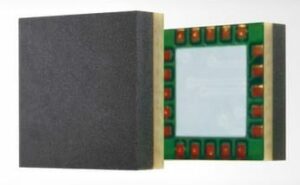 Telit, a provider of communications and Internet of Things (IoT) products, has introduced the company’s newest GNSS module, the Jupiter SE873. This complete GNSS receiver is packaged in a 7 x 7 x 1.85 mm QFN module and includes SQI Flash memory, an integrated Low Noise Amplifier (LNA), SAW filter, and Real Time Clock (RTC).
Telit, a provider of communications and Internet of Things (IoT) products, has introduced the company’s newest GNSS module, the Jupiter SE873. This complete GNSS receiver is packaged in a 7 x 7 x 1.85 mm QFN module and includes SQI Flash memory, an integrated Low Noise Amplifier (LNA), SAW filter, and Real Time Clock (RTC).
Find suppliers of GNSS Products for unmanned systems >
The SE873 supports Assisted GPS (both autonomous and server-based) and Satellite Based Augmentation System (SBAS), which improve Time-To-First-Fix and position accuracy. AGPS data is stored in flash memory and is therefore available even after all power has been removed and then restored. This is especially important for battery-operated equipment.
The SE873 is a high-performance, high-sensitivity product that supports the entire GNSS spectrum (GPS, Glonass, and Beidou), as well as being Galileo ready. It delivers simultaneous low-power tracking of GPS and Glonass or GPS and Beidou. In the future, users will be able to add new functionalities.
“The SE873 outperforms all its competitors, most of which are ROM based. Employing flash memory results in a module that packs a lot of functionality into a small footprint,” said Felix Marchal, CPO Telit. “This new addition to Telit’s GNSS portfolio is a complete multi-constellation position, velocity and time (PVT) engine that delivers versatile performance in harsh environments and it cements the company’s leading position in this space.”


















